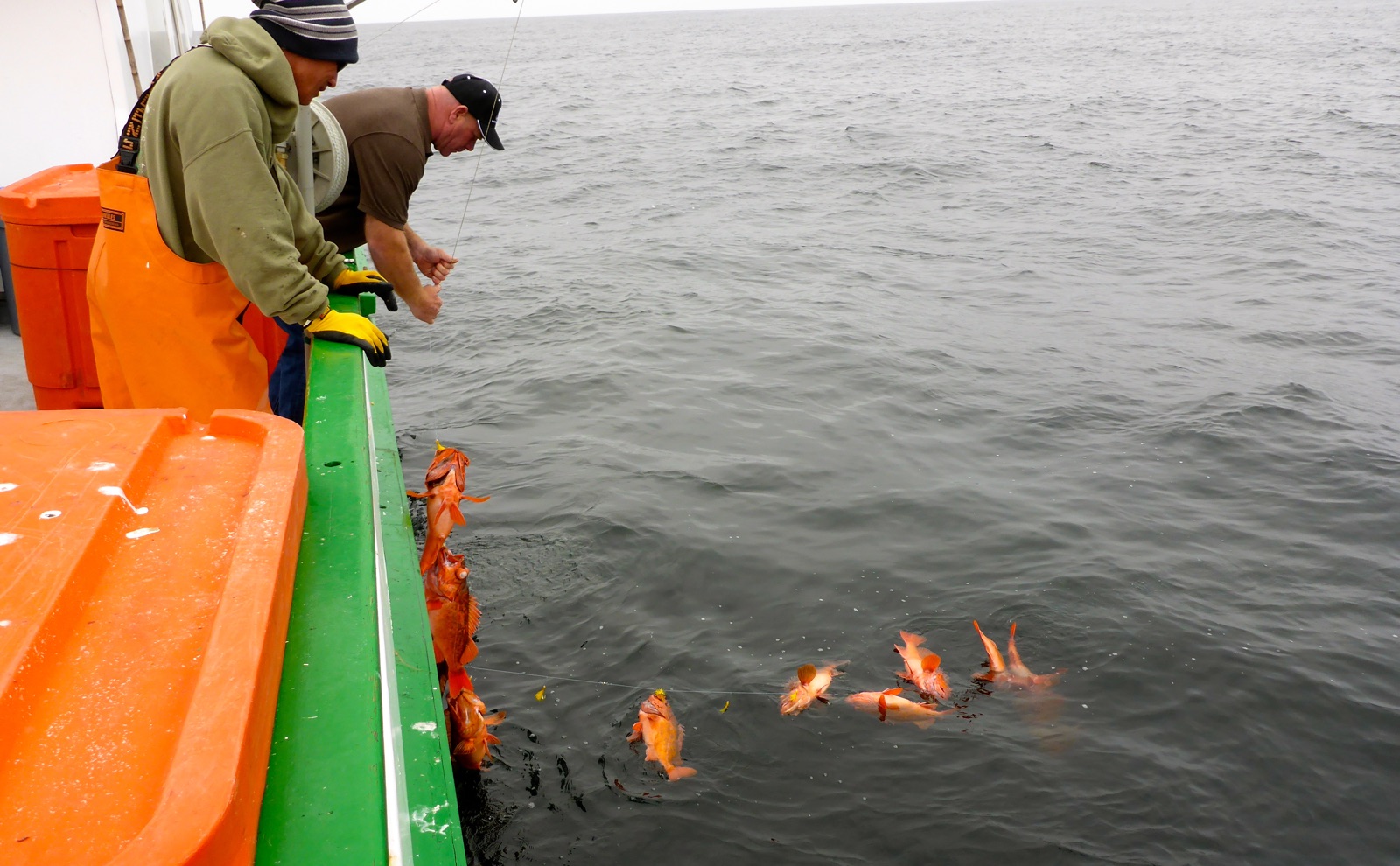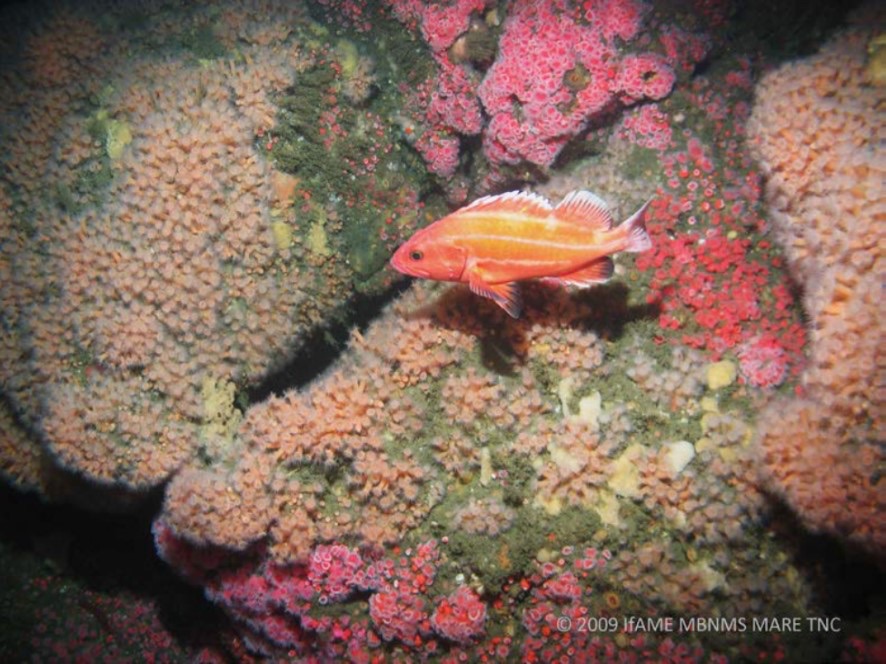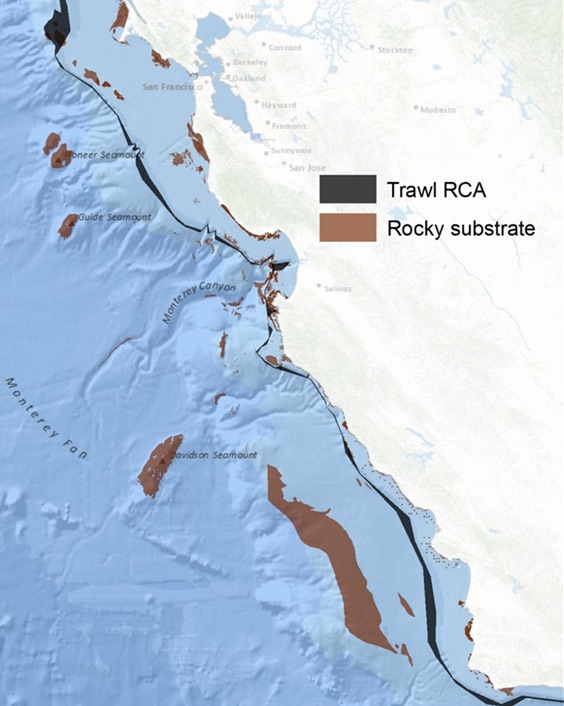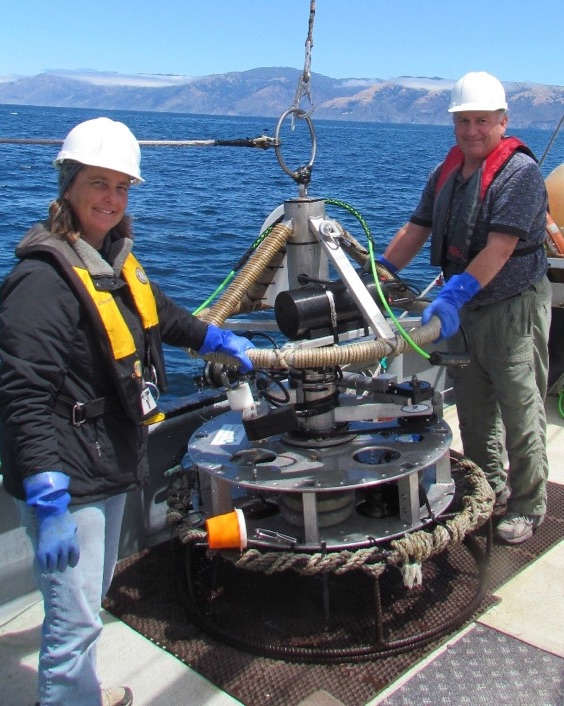How can we reduce bycatch without threatening the economic viability of the fishery?

Fishermen using hook and line gear that had been modified to avoid catching the overfished rockfish, and to target more abundant rockfish species. Photo: The Nature Conservancy / Moss Landing Marine Laboratories
Groundfish include over 90 species of flatfish, roundfish, and rockfish, most of which spend their time near the bottom of the ocean. In the 1970s and 80s, many groundfish populations were devastated by overfishing, especially by deepwater trawls that drag along the bottom, damage seafloor habitats, and collect a variety of nontargeted marine life, or bycatch.
By the 1990s, federal fishery policy changed to demand an end to overfishing, and the U.S. Pacific Fishery Management Council declared ten groundfish species to be overfished. Plans were instituted to immediately halt overfishing of these species and to give them time to recover. This led to the creation, in 2002, of Rockfish Conservation Areas (RCAs) that were closed to bottom trawling, for any fish. One of these RCAs runs the entire length of the California coast along the edge of the continental shelf where it begins to slope downward to the seafloor.

There are over 70 species of rockfish on the U.S. West coast, many of which are caught in the groundfish fishery. The populations of some species, like the yelloweye rockfish pictured here, were overfished and their habitats damaged by deep-water trawls that drag the bottom.
Photo: Ifame-CSUMB_MBNNS_MARE_TNC
A fishing quota program was also implemented for the West Coast groundfish trawl sector that included hard caps on catches. This meant that after a set number of restricted groundfish were caught, the entire fishery could be closed for the rest of the season to avoid risk of further bycatch. Independent observers were also required on each boat, to ensure compliance.
These measures had their intended effects of immediately reducing the catch rates of the overfished rockfish. However, they also had two unintended impacts. One was that by reducing catch rates so drastically and by not allowing catch from their prime habitats, there were few data streams available to assess the status of recovery of those fisheries. Scientists and managers could no longer monitor the distribution, abundance, or size structure of overfished species, limiting their ability to adaptively manage the fishery.
Additionally, the RCA closures and quotas prevented fishermen from catching other fish species that were still plentiful. These limitations led to low catch levels of abundant stocks, with total catches ranging from 16–21% of the allowable catch for species like lingcod, for example. Many people livelihoods, and whole communities, suffered as a result.
In response, Conservancy scientists partnered with fishermen to find a solution that would work for nature and people.
First, we worked with Moss Landing Marine Laboratories, Marine Applied Research and Exploration, Monterey Bay Aquarium Research Institute, the fishing industry, and agency partners to develop a stereo underwater camera system that would allow us to monitor overfished species. This stereo video lander is lowered down to rocky habitats where overfished rockfish like to congregate, and enables us to collect size and abundance data on many species, especially overfished stocks like cowcod and yelloweye rockfish.
We also collaborated with academic partners, central coast fishermen and regulatory agencies to conduct experimental fishing inside the Rockfish Conservation Areas under a special permit. Instead of trawling, the fishermen used hook and line gear that had been modified.

The depth-based trawl Rockfish Conservation Area extends along the entire California coast.

A prototype stereo video lander used in studies of overfished species and the testing of experimental gear. Photo: The Nature Conservancy / Moss Landing Marine Laboratories
A comparison of fishing and video surveys revealed that fishermen could fish with the modified gear and catch the abundant species while rarely catching the overfished species, which were known to be present based on the video surveys. The video surveys provided much- needed information on the abundance, sizes, and habitat associations of the overfished rockfish populations.
This type of cost-effective monitoring approach can help improve the accuracy of stock assessments, inform catch limits and spatial closures with better data, and reduce bycatch of overfished species – and thereby help to maintain the economic viability of California’s fisheries.
Kate Kauer, Lyall Bellquist, Mary Gleason, Aliya Rubinstein, Joe Sullivan, Dwayne Oberhoff, Lisa Damrosch, Michelle Norvell, Michael Bell
This paper presents how voluntary collective agreements amongst fishermen can be used to reduce risk of bycatch of sensitive species and improve fishery performance in the West Coast groundfish…The Nature Conservancy, Jono Wilson
There are thousands of fisheries around the globe that lack the infrastructure, capacity, resources and management techniques to perform conventional assessments and management. We know that fisheries…Darci Palmquist, Mary Gleason, Matt Merrifield
Mary Gleason, Evan Fox, Susan Ashcraft, Jason Vasques, Elizabeth Whiteman, Paulo Serpa, Emily Saarman, Meg Caldwell, Adam Frimodig, Melissa Miller-Henson, John Kirlin, Becky Ota, Elizabeth Pope, Mike Weber, Ken Wiseman
This paper reviews the design of a network of marine protected areas (MPAs) in state waters as mandated by the Marine Life Protection Act (MLPA). A public–private partnership (the MLPA…